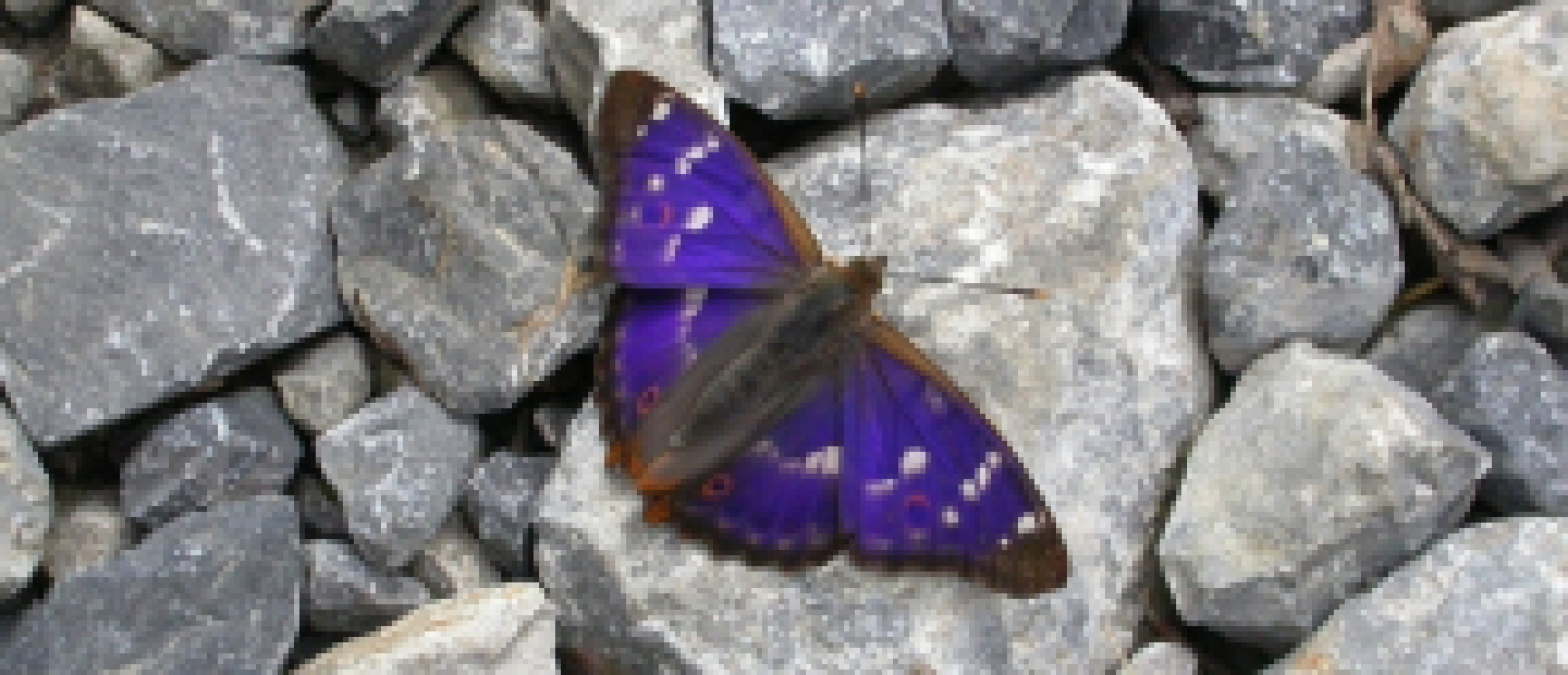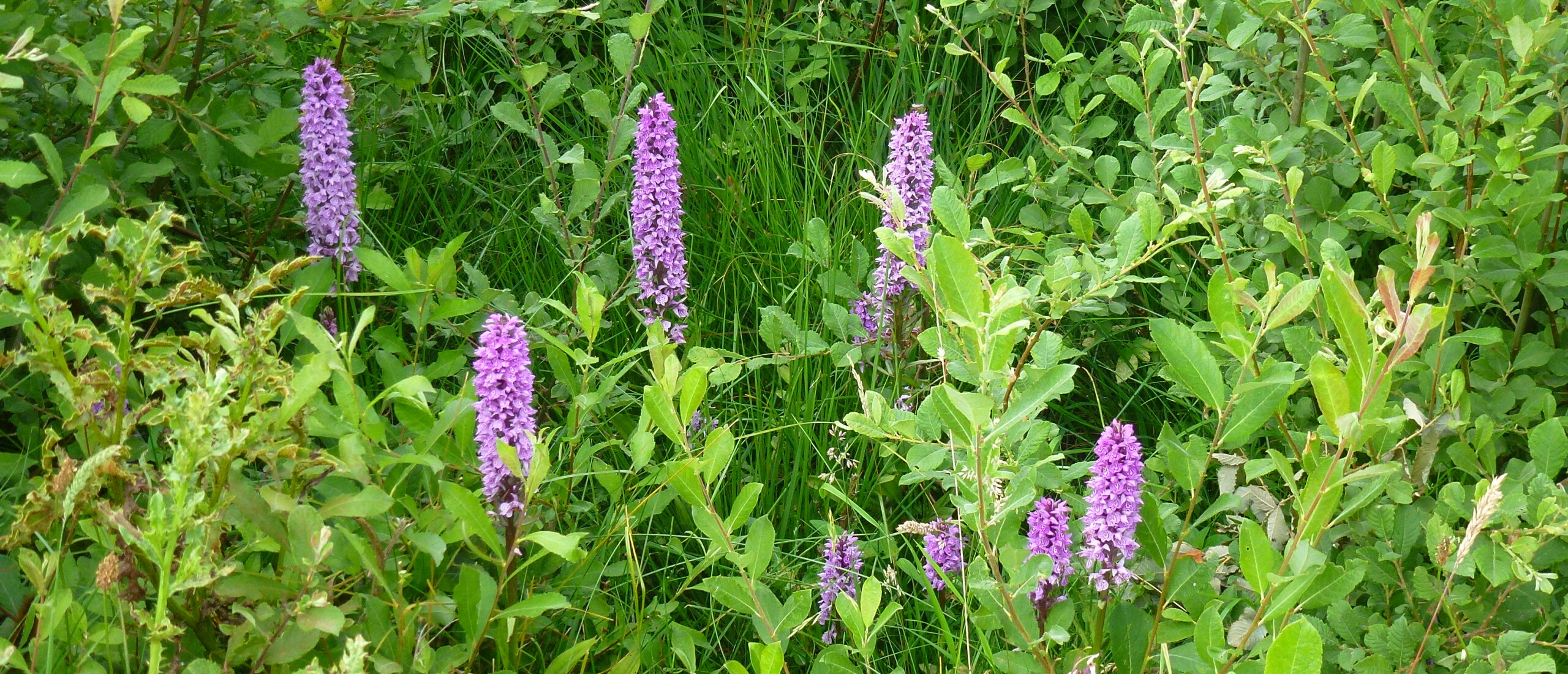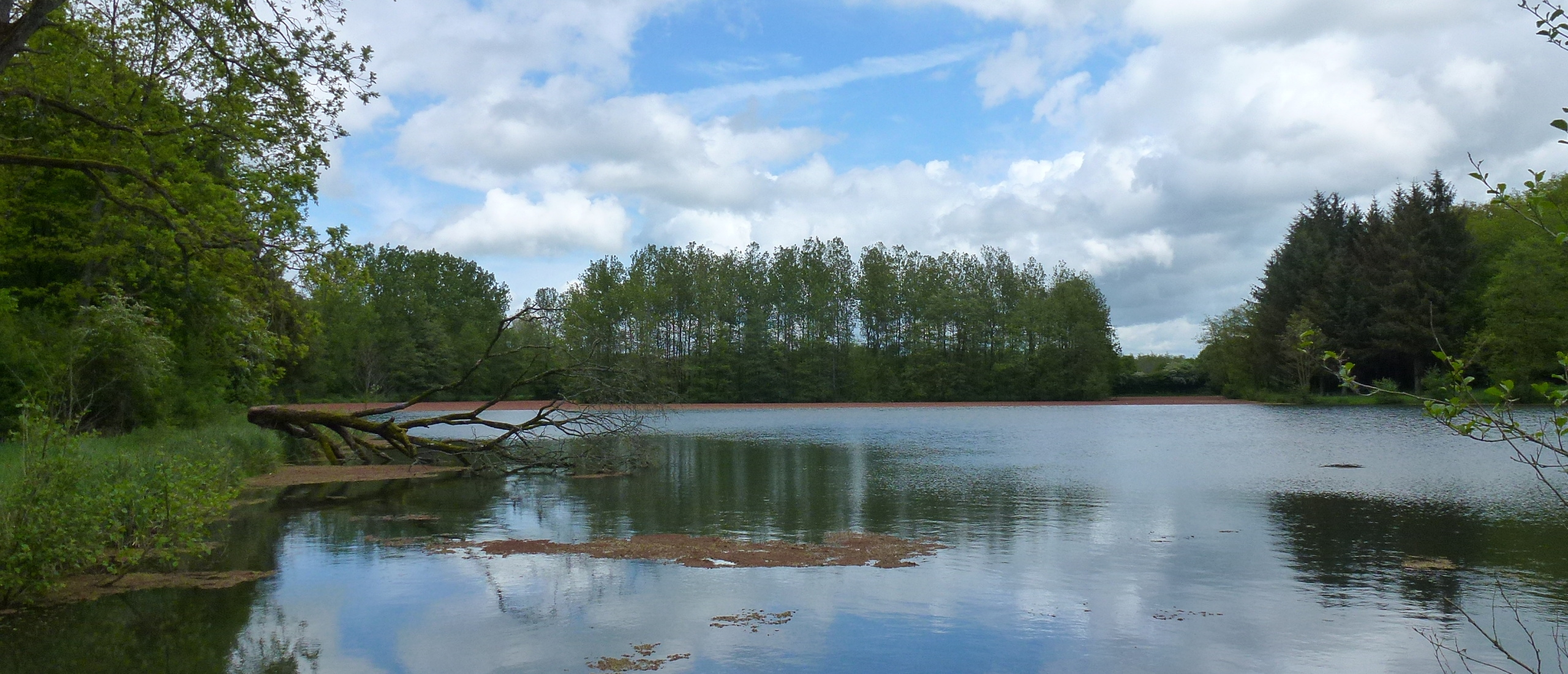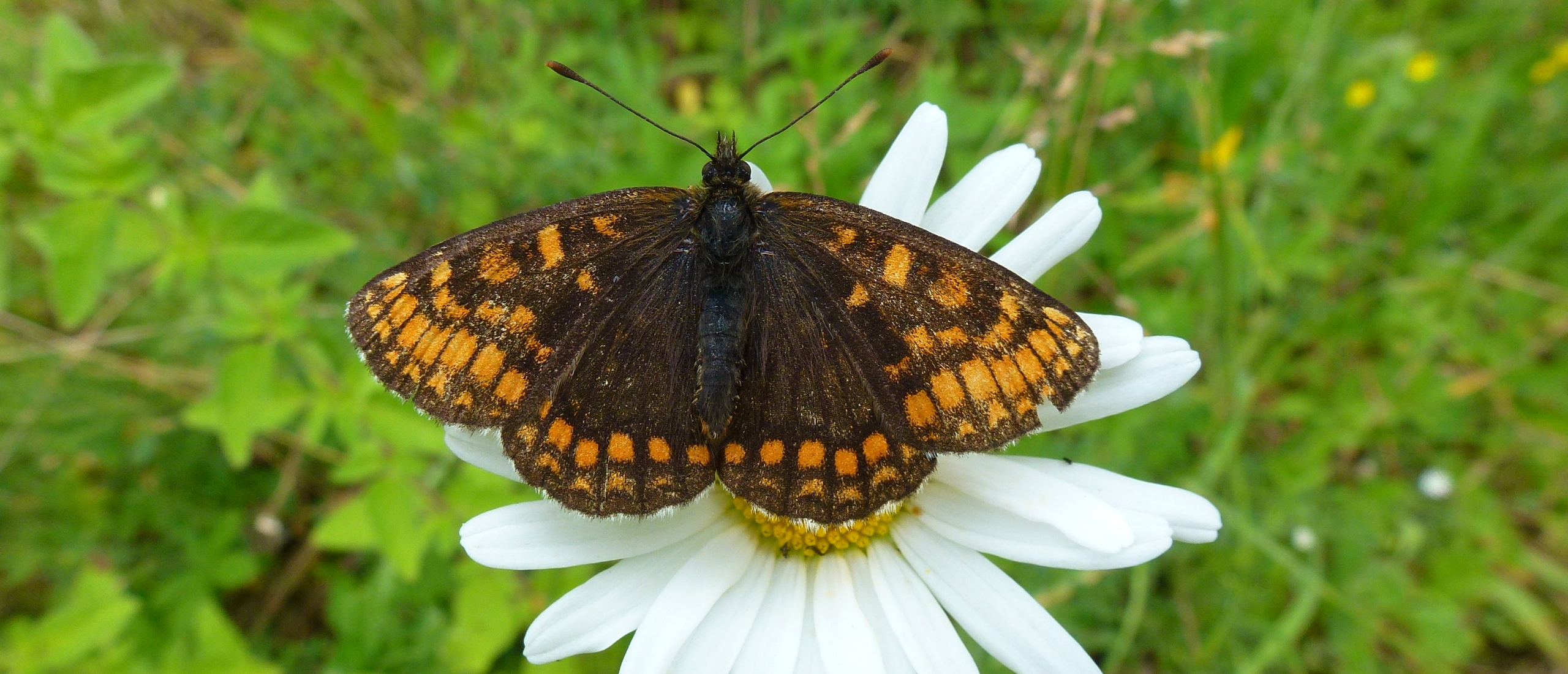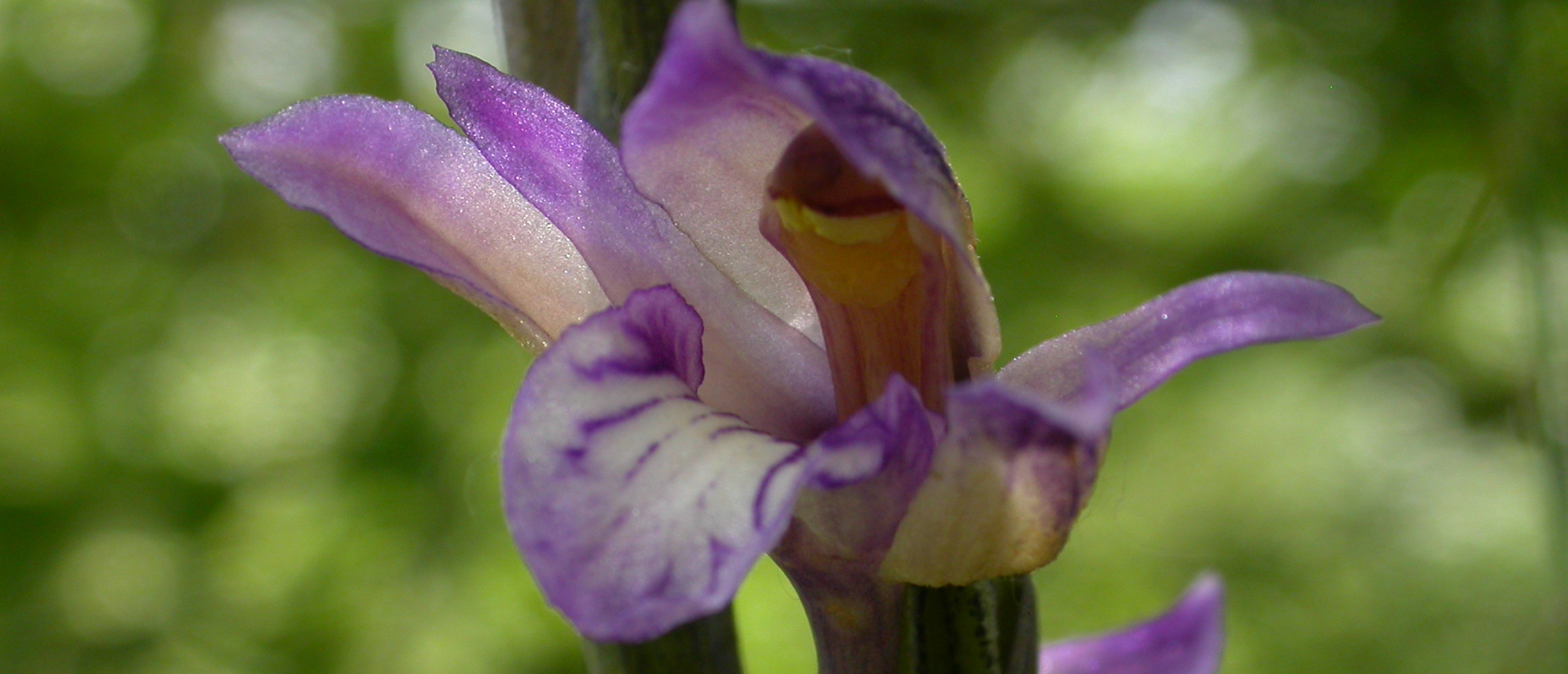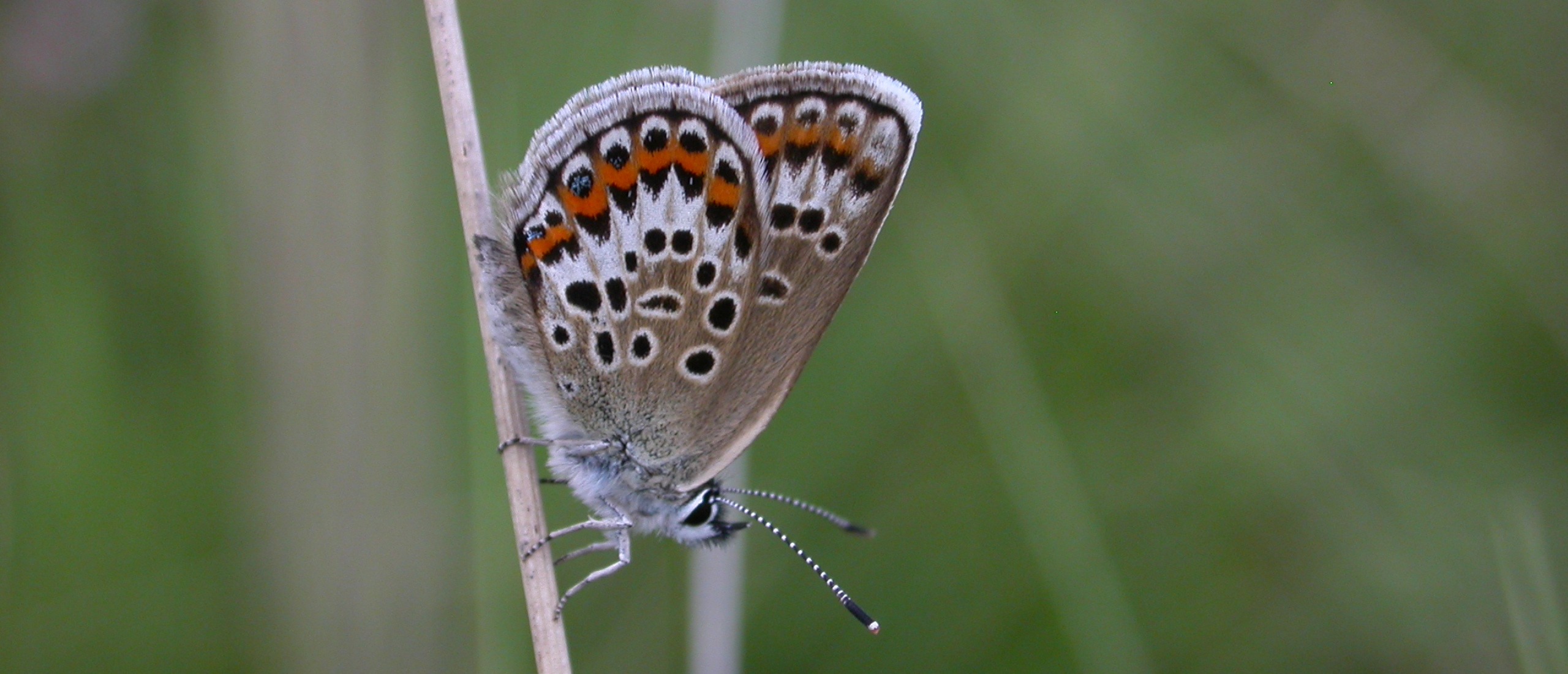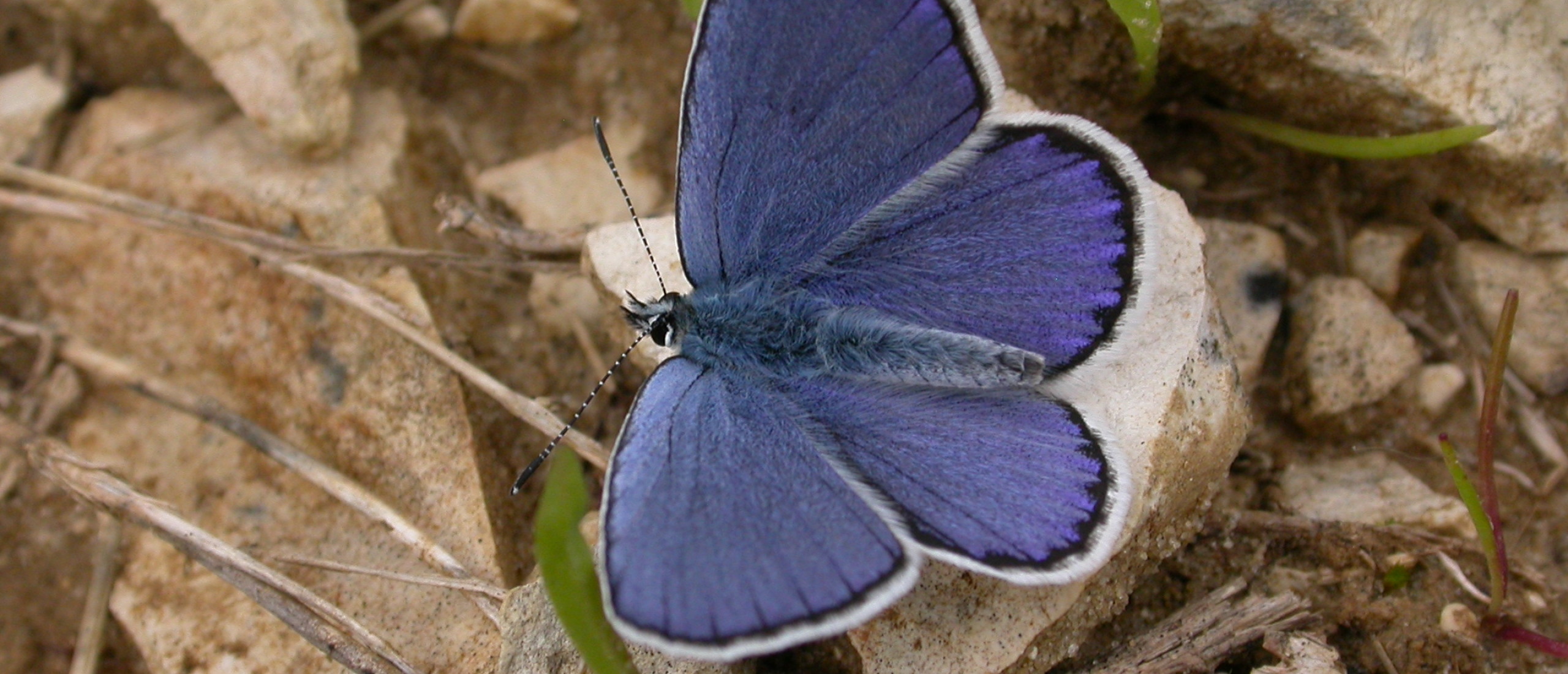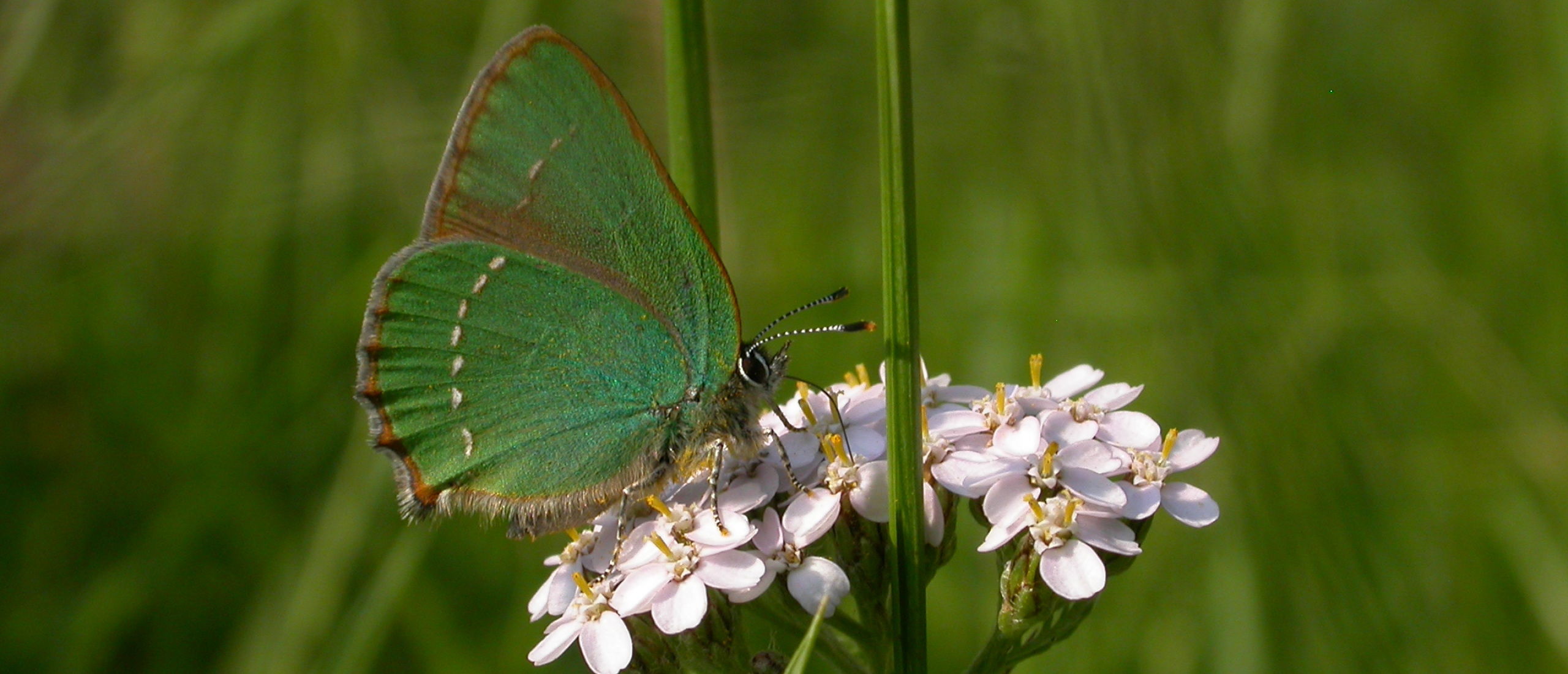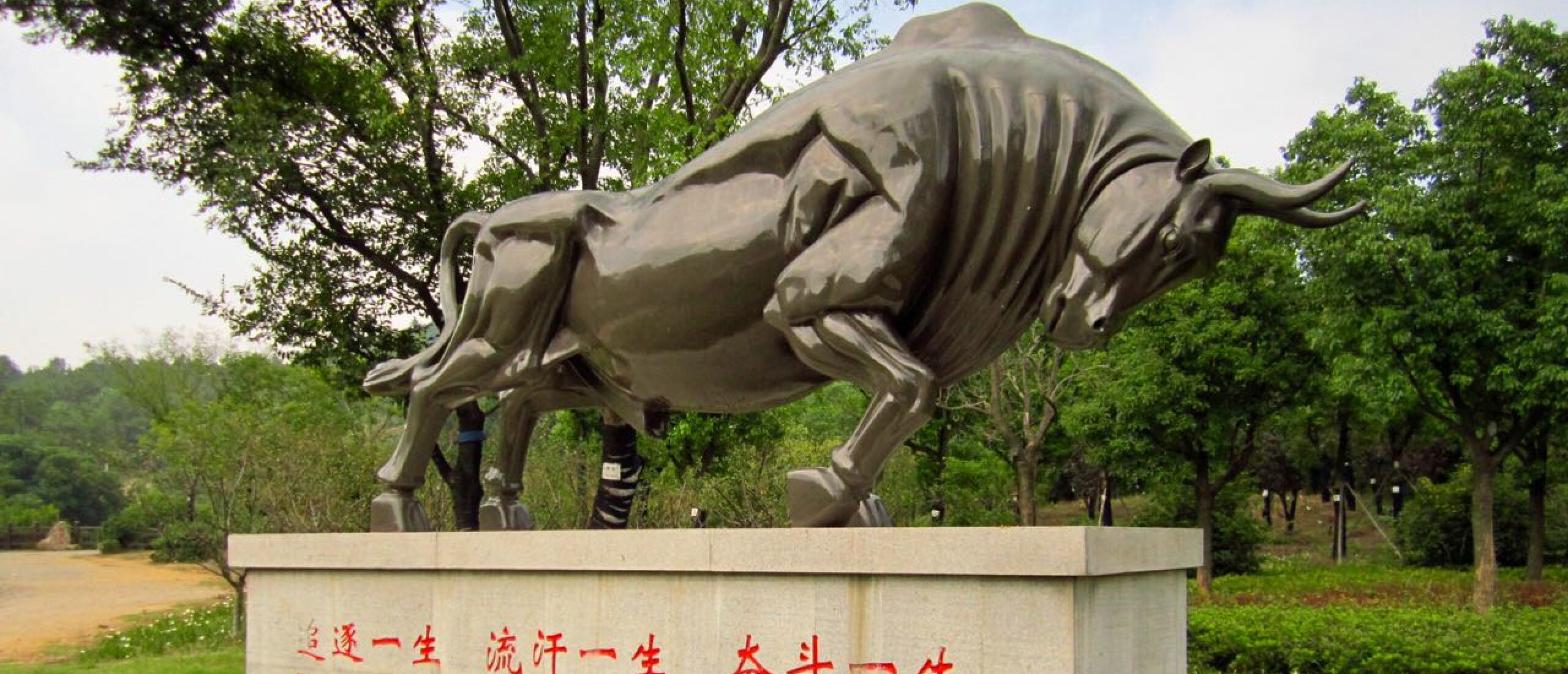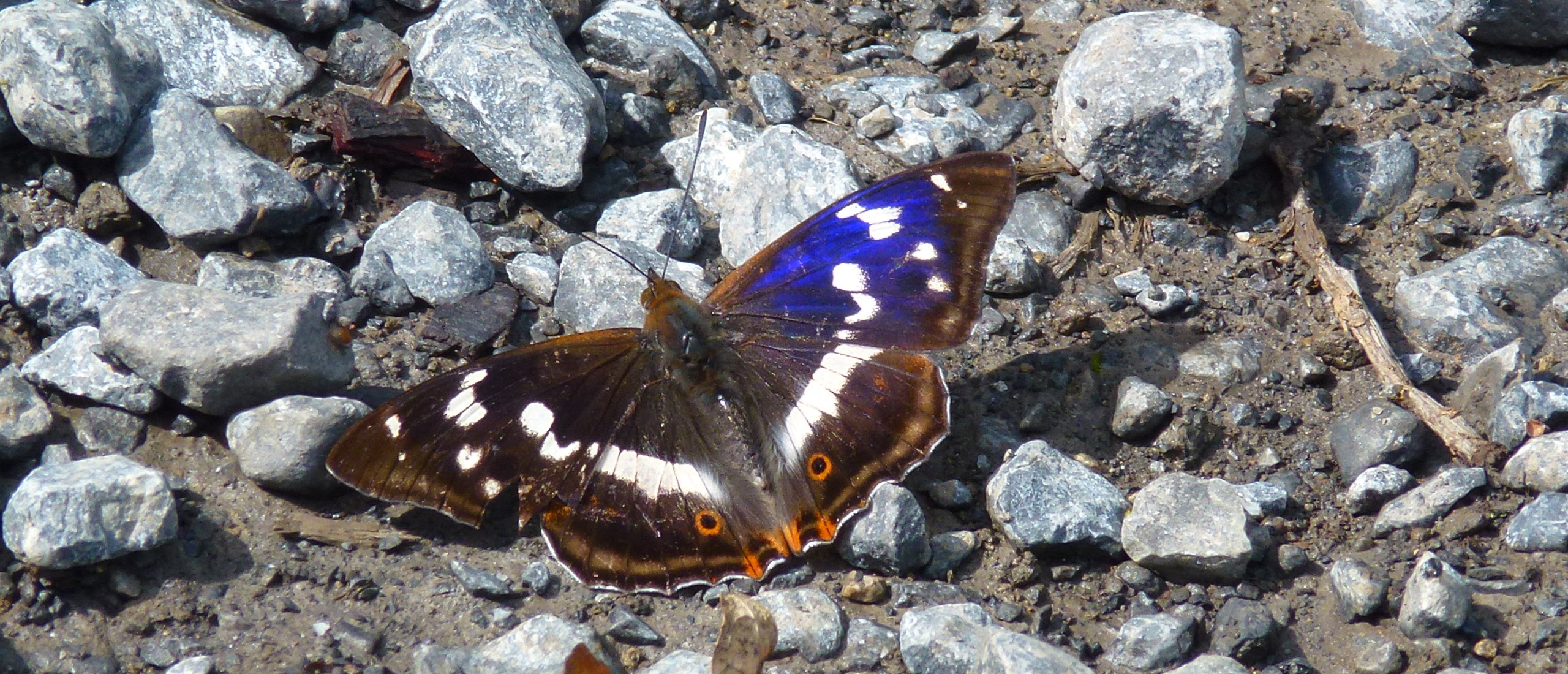
Imperial butterflies Last Friday, 4th July, I set off southwards from home in Amersfoort, and stopped to fill up with petrol at a motorway service station near Breda, shortly before crossing the border into Belgium. I then parked up to eat my sandwich in a McDonalds carpark...and added butterfly number 67 to my 2014 list! A small, darkish butterfly with a contrastingly silvery-grey underside was actively scooting around a row of oak trees - a Purple Hairstreak, Neozephyrus (Quercusia) quercus. This must be one of Europe's most overlooked and under-recorded species, occurring in virtually every reasonably extensive patch of oaks, yet hardly ever coming down to feed on flowers, so seldom observed. The weekend was an illustration of how narrow the window of opportunity to see particular species of butterfly can be. The first weekend in July is traditionally my Emperor-watching weekend, and I had set my heart on seeing both the Purple Emperor, Apatura iris, and the Lesser Purple Emperor, Apatura ilia, both of which occur in reasonable numbers in the large forests in northern France and southern Belgium that I frequently visit. Despite my high hopes, Saturday dawned grey and gloomy, and later turned into a complete wash-out, with torrential showers and hardly a gleam of sunshine. Sunday was slightly better, and I headed to my usual Emperor track, where several Silver-washed Fritillaries, Argynnis paphia, were flying, some males even chasing females in their extraordinary courtship flight, where the male flies around the female, up over her, then down in front of her, passing beneath her before rising again behind her. A few tired-looking Lesser Marbled Fritillaries, Brenthis ino, were also in evidence, as were numerous Ringlets, Aphantopus hyperanthus, and a few Wood Whites, Leptidea sinapis/reali. Finally, a powerfully flying, dark butterfly shot past me, with a slight yellowish tinge. It glided around with occasional flaps, which could even be heard as a swishing sound, and finally landed on the damp sandy gravel beside the track - a male Lesser Purple Emperor of the form f. clytie, which has yellowish markings on the upperside.
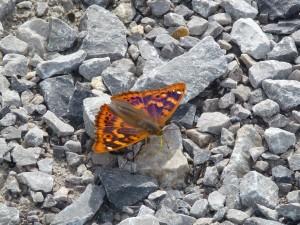 The male Lesser Purple Emperor f. clytie has a yellowish suffusion and markings
The male Lesser Purple Emperor f. clytie has a yellowish suffusion and markings
The weather was still only marginally suitable for butterflies, but I did go on to see perhaps five Lesser Purple Emperors in total, including two of the other form, f. ilia, which has white markings rather than yellow.
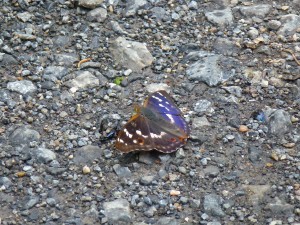 Male Lesser Purple Emperors of the form f. ilia have white markings rather than yellow
Male Lesser Purple Emperors of the form f. ilia have white markings rather than yellow
Pleased as I was to see these splendid butterflies, the question remained as to where their larger cousins were, and in fact the sun disappeared before I was able to locate one that day. However, the Monday morning saw me scouring the same track, which I know from many previous years is a reliable site for Purple Emperors. My first observation was of a far smaller butterfly, but one which shares the dark background with white markings in the same places, the European Map, Araschnia levana.
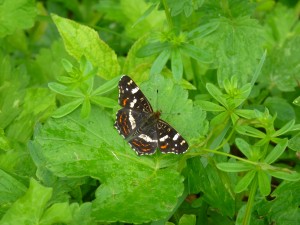 The Map butterfly shares the same basic pattern with the Purple Emperor
The Map butterfly shares the same basic pattern with the Purple Emperor
The Map is an extraordinary butterfly, having two totally different seasonal forms, the Spring generation being orangey-brown, and indeed early lepidopterists classed the two forms as different species, not realising that they were in fact the same butterfly.
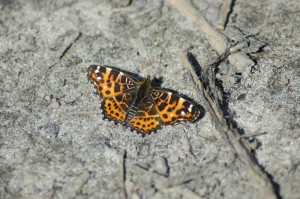 The Spring form of the Map looks quite different to the Summer form
The Spring form of the Map looks quite different to the Summer form
Once, and only once, I had the incredible luck to find both forms feeding on a flower-head at the same time, but sadly by the time I had prepared my camera, one had flown off. Wildlife photography can be indescribably frustrating! Other than several White Admirals, Limenitis camilla, there seemed to be even less on the wing than the previous afternoon, and I had already turned back to return to the car, when finally a male Purple Emperor, Apatura iris, swooped down from a nearby tree and landed on the track, allowing me to observe it sucking up the mineral-soaked moisture with its probing yellow proboscis.
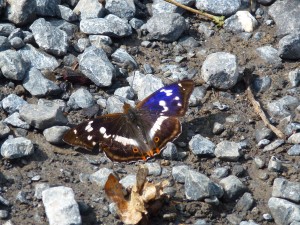 Luckily I saw the Purple Emperor just before leaving
Luckily I saw the Purple Emperor just before leaving
Yesterday, Thursday 10th July, I added one further species to my list, the Grayling, Hipparchia semele. I found two individuals nectaring on Yarrow flowers by a roadside parking area in the Veluwe area of the central Netherlands, where the species is quite numerous. I did not attempt to photograph the butterflies as they were directly next to a parked car containing a sleeping occupant. Sometimes even eccentric butterfly-photographers have to restrain themselves! This brought my 2014 list up to 69 species Tomorrow I leave the Netherlands, perhaps forever, after 14 years. I shall be out of internet contact for some time, so further posts will follow once I am back in circulation.


